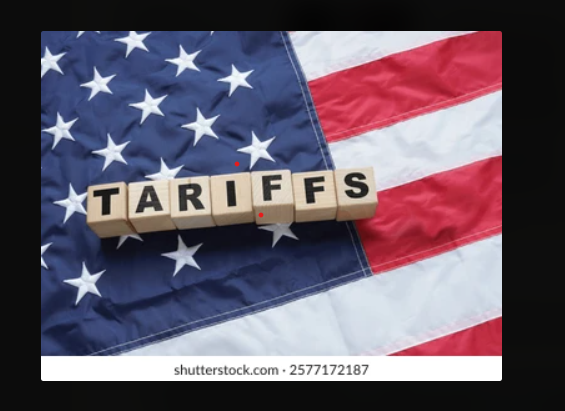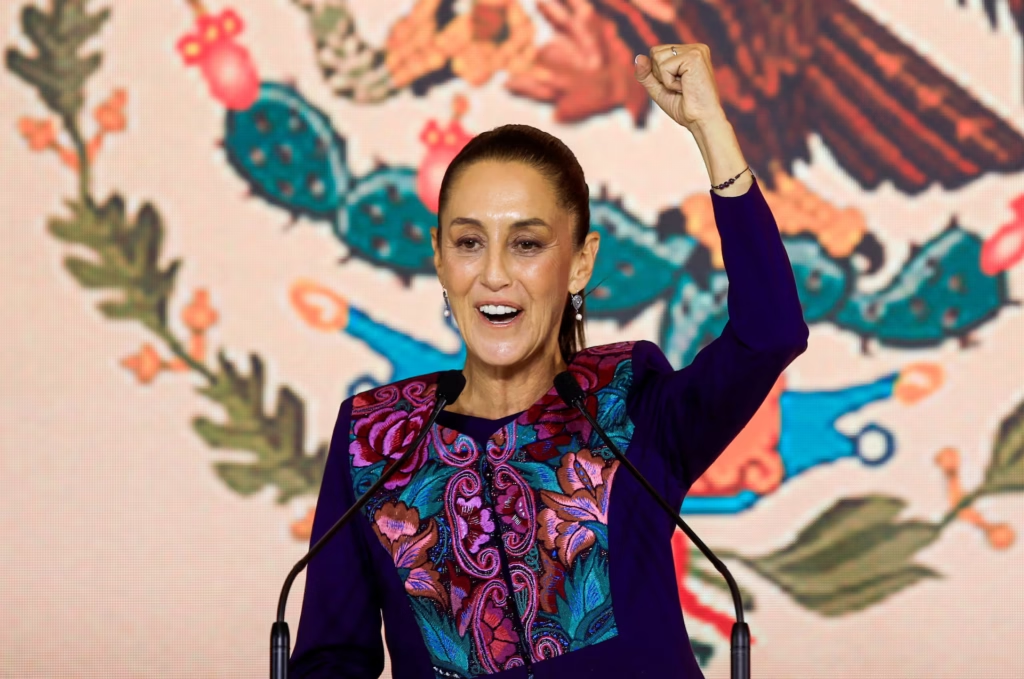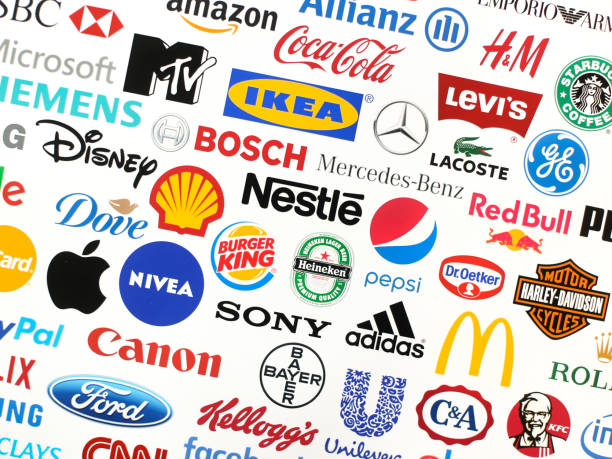The damage to brand loyalty and disruption of supply chains
Canadian liquor stores in provinces like Ontario and British Columbia have removed American alcohol brands, including Jack Daniel’s, from their shelves as a response to U.S. tariffs. Lawson Whiting, CEO of Brown-Forman, described this as “worse than a tariff” because it completely eliminates sales in Canada. While Canada represents only 1% of Jack Daniel’s sales, the move disrupts brand visibility and long-term demand forecasting.
Canada is the largest export market for U.S. wines, with annual retail sales exceeding $1.1 billion. The tariffs and retaliatory consumer backlash have hurt the California wine industry, which is already grappling with challenges in the global marketplace. Canadian consumers are now favoring domestic wines, further reducing U.S. wine exports.

Costco has announced plans to reduce its reliance on Canadian products in its U.S. stores due to the controversial tariffs. The company is exploring alternative sourcing from non-tariff nations to manage costs and maintain competitive pricing. This shift highlights how tariffs disrupt cross-border supply chains and force companies to rethink procurement strategies.
Some Canadians have boycotted American consumer goods like Colgate toothpaste, opting instead for Canadian alternatives such as Green Beaver products. This reflects a broader “Buy Canadian” sentiment that is negatively affecting iconic U.S. brands in the Canadian market.
Retailers pulling U.S. products off shelves is creating a domino effect that goes beyond immediate revenue loss. It disrupts inventory planning and long-term demand forecasting for affected brands. Experts warn that this could permanently lock U.S. brands out of shelf space in Canada if the “Buy Canadian” movement persists.
These unfolding scenarios underscore how tariffs are not only increasing costs but also damaging brand loyalty and disrupting supply chains, with long-term implications for both Canadian businesses and American exporters.
Highlights of the tariff regime

As of March 7, 2025, several products are affected by tariffs imposed under President Donald Trump’s administration. The major highlights of the tariff regime are:
1. Canadian Dairy and Lumber: President Trump announced plans to implement reciprocal tariffs on Canadian dairy and lumber products if Canada does not reduce its current rates, which he claims are as high as 250%. These measures aim to protect American farmers and ensure fair trade practices.
2. Mexican and Canadian Imports: On February 1, 2025, President Trump signed executive orders imposing a 25% tariff on all goods from Mexico and Canada, with a specific 10% tariff on Canadian energy exports, including electricity, natural gas, and oil. These tariffs were temporarily paused for one month after both countries agreed to enhance measures to prevent drug trafficking into the United States.

Mexican President Claudia Sheinbaum
3. Chinese Imports: The administration has imposed a 10% tariff on all goods imported from China, aiming to address trade imbalances and protect domestic industries.
These tariffs have led to retaliatory measures from affected countries, impacting various sectors of the U.S. economy. For instance, the European Union imposed tariffs on U.S. products such as steel, aluminum, agricultural goods, and motorcycles. Additionally, tariffs on imports from Mexico and Canada have raised concerns about increased prices for fresh fruits and vegetables, affecting American consumers, particularly low-income families.
The changing global trade dynamics
The ongoing trade policies continue to influence global trade dynamics and domestic markets, with potential implications for various industries and consumers.
Several key industries in Canada are particularly vulnerable to the impacts of U.S. tariffs due to their heavy reliance on exports to the United States and the deeply integrated nature of cross-border supply chains. Here are the most affected sectors:
1. Automotive Industry
The automotive sector is highly integrated with the U.S., with over one-third of the U.S. auto supply chain dependent on Canadian imports. Tariffs on auto parts and materials disrupt production, increase costs, and make vehicles more expensive for consumers.
Ontario, a hub for automotive manufacturing, faces significant economic risks due to its reliance on U.S. trade.
2. Energy Sector
Canadian oil and gas producers are heavily reliant on U.S. markets, with 58% of U.S. oil imports coming from Canada. Tariffs in this sector could drive up energy prices in the U.S. while severely impacting Canadian exports.
Alberta, Saskatchewan, and Newfoundland and Labrador would be most affected due to their concentration of energy exports.
3. Primary Metals (Including Aluminum and Steel)
Primary metals are among the most tariff-sensitive industries. Previous tariffs on Canadian aluminum and steel have already demonstrated their disruptive potential, increasing costs and reducing competitiveness in the U.S. market.
4. Manufacturing
Manufacturing sectors such as machinery, plastics, chemicals, and aerospace are deeply integrated with U.S. supply chains. Tariffs in these industries create cascading effects across suppliers and increase production costs.
Aerospace manufacturing is particularly vulnerable due to its reliance on cross-border trade for components.
5. Food and Beverage
The food and beverage industry faces challenges as tariffs increase the cost of exports to the U.S., reducing demand and profitability for Canadian producers.
6. Forestry
The forestry sector, including wood products and pulp and paper manufacturing, is sensitive to tariffs due to its dependence on U.S. markets for processed goods.
7. Transportation Equipment (Excluding Cars)
Transportation equipment manufacturing (e.g., railcars, ships) is another vulnerable sector due to its reliance on exports to the U.S.
The major brands in Canada are:
Financial Sector
- Royal Bank of Canada (RBC)
- Toronto-Dominion Bank (TD)
- Bank of Montreal (BMO)
Energy Sector
- Enbridge
- Suncor Energy
Technology
- Shopify
- 1Password
Transportation & Industrials
- Canadian National Railway (CN)
- Canadian Pacific Kansas City (CPKC)
Consumer Goods & Retail
- Lululemon Athletica:
- Alimentation Couche-Tard
Media & Information
- Thomson Reuters
Other Notable Companies
- Manulife Financial
- Canadian Solar
- Teck Resources
Adapting to the #BuyCanada campaign
The ongoing “Buy Canada” campaign is meant to protect brands amidst the trade war, and Canadian retailers are actively responding to the movement. Here are some notable ways retailers are adapting:
1. Promotional Campaigns
Retailers like FreshCo, a subsidiary of Sobeys, have incorporated “Buy Canadian” messaging into their advertising. They encourage customers to spot and shop for Canadian products by using shelf tags and flyers marked with a maple leaf symbol to identify domestic goods.
Loblaw Companies, Canada’s largest food retailer, has committed to doubling down on promoting locally grown and made products, offering targeted pricing deals and exclusive promotions on Canadian items.
2. Clearer Product Labelling
Retailers are addressing consumer confusion about what constitutes a Canadian product by improving transparency in labelling. For example, Sobeys has pledged to ensure its labels meet Canadian Food Inspection Agency (CFIA) standards and has implemented processes to correct discrepancies.
3. Highlighting Local Alternatives
Grocery stores are revamping in-store displays with end-of-aisle signage and stickers to make it easier for shoppers to identify local options. Websites like Madeinca.ca are also helping consumers distinguish Canadian-made products from imports.
4. Navigating Regional Challenges
In northern communities like Dawson City, Yukon, stores such as Bonanza Market have emphasized their Canadian-sourced products, including dairy and meat. However, limited availability of fully Canadian products remains a challenge due to supply constraints.
5. Adjusting Inventory
Retailers like Atlin Lake Grocery Store in British Columbia have begun phasing out U.S.-made products once current stock is sold, replacing them with Canadian alternatives where possible. However, cost considerations remain a significant factor in these decisions.
6. Consumer Engagement
Social media groups like “Made in Canada — Canadian Products” have grown rapidly, with over 1.2 million members sharing information about Canadian alternatives to U.S. goods. Retailers are leveraging this consumer-driven momentum to align their offerings with patriotic buying preferences.
This patriotic Buy Canadian campaign is paying off gradually with some notable success stories of Canadian companies benefiting from the movement:
1. Province of Canada (Apparel Brand) (Get logo and pix of Julie Brown)
The Toronto-based apparel company saw its February sales double during what is typically a slow season, driven by increased consumer interest in locally made products. Co-founder Julie Brown noted that the surge in demand has prompted the company to consider hiring more staff and expanding product development. This success highlights how patriotic sentiment has translated into tangible growth for Canadian-made fashion brands.
2. Silk & Snow (Mattress and Bedding)
Silk & Snow, a Toronto-based mattress and bedding company, has experienced significant revenue growth as consumers increasingly recognize its Canadian-made products. The company’s mattresses are manufactured in Canada using domestically sourced components like steel coils. This alignment with the “Buy Canadian” ethos has helped Silk & Snow exceed its revenue forecasts, even as it navigates challenges posed by potential tariffs on U.S.-sourced materials.
3. Sap Sucker (Sparkling Water)
Sap Sucker, a sparkling water brand sweetened with organic maple syrup, has seen a rise in inquiries from customers eager to confirm its Canadian origins. With a supply chain fully insulated from U.S. exposure, the brand is well-positioned to capitalize on the movement, and its leadership is optimistic about future growth as demand for truly Canadian products continues to rise.
4. Comeback Snacks (Popcorn)
Hamilton-based popcorn company Comeback Snacks has reported increased sales at the retail level, bolstered by stores like Indigo prominently labeling its products as Canadian-made. While this hasn’t yet translated into larger distributor orders, founder Emily O’Brien anticipates further growth as the movement gains momentum.
5. Liquor Stores Promoting Canadian Alcohol (pix of array of liquors)
Liquor retailers across Canada have replaced U.S.-made whiskey and bourbon with Canadian alternatives, leveraging bold marketing campaigns to highlight the economic patriotism of supporting local brands. This strategy has not only boosted sales of Canadian-made spirits but also positioned liquor stores as champions of national pride.
6. Shopify’s Canadian Merchants
Shopify, the Ottawa-based e-commerce giant, reported a 213% surge in sales of memory foam mattresses stocked by Canadian merchants between January and February. Other categories like T-shirts, pajamas, and armchairs also saw significant increases, reflecting how Shopify-enabled businesses are thriving under the “Buy Canadian” movement.
How brands can stay strong

But how can brands navigate these labyrinths and stay strong? They can take proactive measures to protect themselves. Here’s a breakdown of potential strategies:
- Diversify Supply Chains:
- Explore alternative suppliers in non-tariffed regions to reduce reliance on U.S.-Canada trade routes.
- Consider domestic sourcing or partnerships with suppliers from countries unaffected by the tariffs.
- Engage in Advocacy:
- Participate in consultations with the Canadian government during the tariff review process to highlight unintended consequences on specific goods.
- Collaborate with trade associations to lobby for exemptions or reduced tariffs on critical products.
- Adapt Pricing and Contracts:
- Renegotiate contracts with suppliers and customers to share the burden of increased costs.
- Adjust pricing strategies to account for tariff-related expenses while maintaining competitiveness.
- Strengthen Local Market Presence:
- For U.S. brands, invest in marketing campaigns that emphasize product value to counteract the “Buy Canadian” sentiment.
- Canadian brands can capitalize on nationalist consumer trends by promoting locally made alternatives.
- Expand Export Markets:
- Identify new international markets to offset reduced demand from the U.S.
- Leverage trade agreements with other nations to diversify export destinations.
- Monitor Trade Developments:
- Stay updated on tariff policies and potential retaliatory measures to quickly adapt business strategies.
- Use predictive modeling tools to assess financial risks and plan inventory accordingly.
- Enhance Resilience:
- Invest in technology and operational efficiencies to minimize cost increases due to tariffs.
- Build stronger relationships with key stakeholders across supply chains to ensure stability during disruptions.
By taking these steps, businesses can mitigate the adverse effects of tariffs while positioning themselves for long-term resilience in a volatile trade environment.
This report was generated with the assistance of AI
